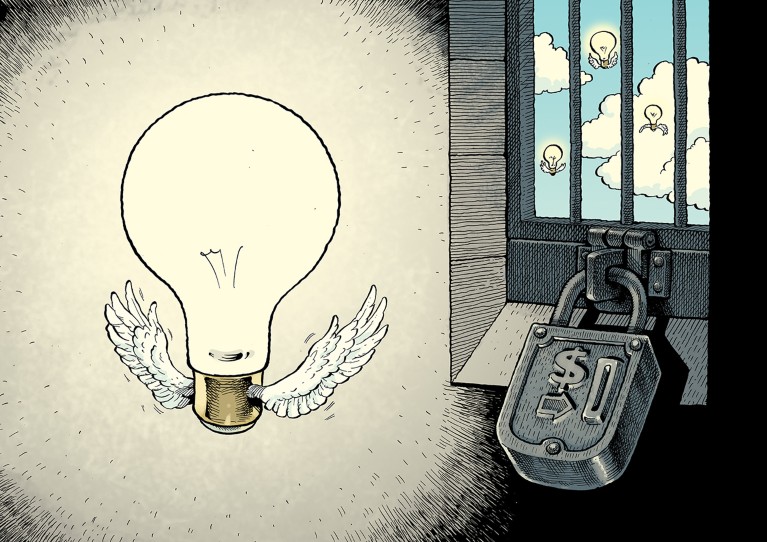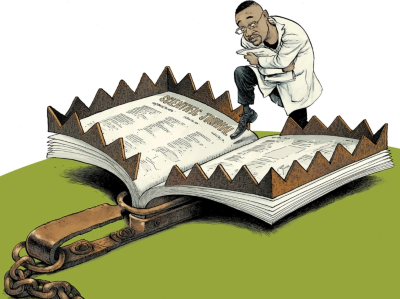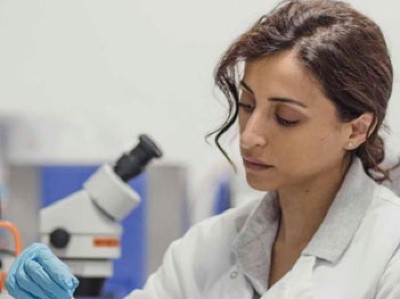
Illustration: David Parkins
The advice
Nature reached out to three researchers for tips on article processing charges (APCs). These fees can range from several hundred to thousands of dollars, and are requested by journals in return for making their articles OA — free for everyone to read.
According to a study published in 2023, the average fee for publishing an OA article is close to US$1,4001. OA fees can create significant barriers to publishing and sharing one’s work, especially for researchers based in low- and middle-income countries (LMICs). For instance, among the top 40 journals in ecology, the average OA fee was $3,150, according to a 2021 study2. The authors described it as a hardship for African scholars, who typically do not receive grant funding and whose monthly salaries at the time of the study ranged from $365 to $2,300.

I’m worried I’ve been contacted by a predatory publisher — how do I find out?
Most scientific journals are transparent about their publishing fees, which are typically included in the author guidelines or stated on their website. “If a journal suddenly asks for payment” having not mentioned such a requirement initially, says Kit Magellan, an independent behavioural ecologist based in Siem Reap, Cambodia, “it is likely a predatory journal — run away!” Predatory journals present themselves as legitimate publications, but use the OA publishing model to dupe authors into paying them fees.
If the APCs for a legitimate journal are too steep for you to afford, there are multiple ways to tackle the cost. “The first thing to do is check in with your co-authors to see if they have any funds available,” says Magellan, because scientists might be eligible to have APCs covered by their grants or by funding organizations. If not, she recommends asking your institution if it provides researchers with financial support to publish OA.
Institutional support for APCs is highly variable, ranging from offering no funding to covering the full cost. “Processing fees can get prohibitively expensive,” says Thulani Makhalanyane, a microbial ecologist at Stellenbosch University in South Africa. “My institution will reimburse half the cost, but I still have to think about where the other half of that expense will come from.”
Both Magellan and Makhalanyane note that scientific societies often offer their members grants or financial support — separate from funding for day-to-day laboratory work — to pay for APCs. For example, in December 2023, the American Physical Society announced a partnership with the non-profit organization Research4Life to cover APCs for paper submissions from scientists in 100 LMICs. Since 2002, Research4Life has helped researchers at more than 11,500 institutions in 125 LMICs access peer-reviewed papers from over 200,000 journals and books. Other governmental partnerships and programmes, such as the European Commission’s Open Research Europe and the library partnership SCOAP, pay OA fees directly to publishers, to avoid publishers passing those costs on to authors.
Another option is to contact the journal you want to publish with, to see whether it can offer assistance or flexibility with APCs. When approaching a journal editor, Makhalanyane recommends being upfront and open about your budget. “Tell the editor you’d like to submit your paper to their journal because you think it’s a good fit, but that you can’t afford the fee,” he says. As a journal editor himself, Makhalanyane receives several OA fee waivers from the publisher each year that he can offer to researchers. “Most of these vouchers are never taken,” he adds.
Springer Nature was asked whether it provides assistance with APCs for researchers in LMICs. (Springer Nature publishes Nature, but the magazine’s careers team is editorially independent of its publisher.) “Enabling open-access equity remains a key part of our focus,” said a spokesperson, who made reference to the publisher’s waiver policy for fully OA journals, Transformative Agreements and partnerships with organizations such as Research4Life.
The spokesperson also noted that the company has an initiative for Nature and the Nature research journals that means that accepted papers by authors from more than 70 LMICs are published at no cost to them. Finally, a tiered-pricing pilot adjusts the APC on the basis of the lead author’s country of residence, the spokesperson said.
Other researchers who want to pursue the OA route wait until their paper is close to publication before approaching an editor about the cost. “I don’t consider budget issues when I submit papers,” says Noam Shomron, a genomicist and computational biologist at Tel Aviv University in Israel. The peer-review and publication process can span months to a year or longer, and researchers’ budgets can fluctuate drastically over that period, he explains. “If I’m running out of funding at the time, I just tell the publication I don’t have the money. Very often they give me a 10% or 20% discount, which is nice.” Even if a discount isn’t possible, Shomron says that journals might defer payment for a year or two.
Magellan, who also has experience as a journal editor, emphasizes that vouchers and fee waivers are meant for exceptional circumstances, in which the author lacks access to funding to cover APCs. For those who are paying the standard charges, she is keen to see more-flexible payment plans from publishers. “It would be good for journals to allow authors to pay in instalments so the APC vouchers can remain available for the people who really need it,” she says.

Collection: Careers toolkit
“The recent proliferation of online fee-paying journals seems to sometimes result in the perception that you have to pay to publish,” says Magellan. But researchers who can’t afford OA fees can still publish their work for free in many scientific journals, with the caveat that their articles might be hidden behind a paywall. “You can still share your article with colleagues in the field, use it in presentations and cite it; it just can’t be freely accessed,” she says. However, researchers at eligible institutions in LMICs can access paywalled papers through resources such as Hinari, a branch of Research4Life that provides access to thousands of medical and health journals.
“Submissions that come from the parts of the world where researchers can’t afford to publish are usually such a minor fraction of the papers that end up being published,” says Makhalanyane. “I would encourage people who want to publish and genuinely cannot afford the APCs to ask for vouchers. The fees shouldn’t stop you from showcasing your science in the best journals you can.”
